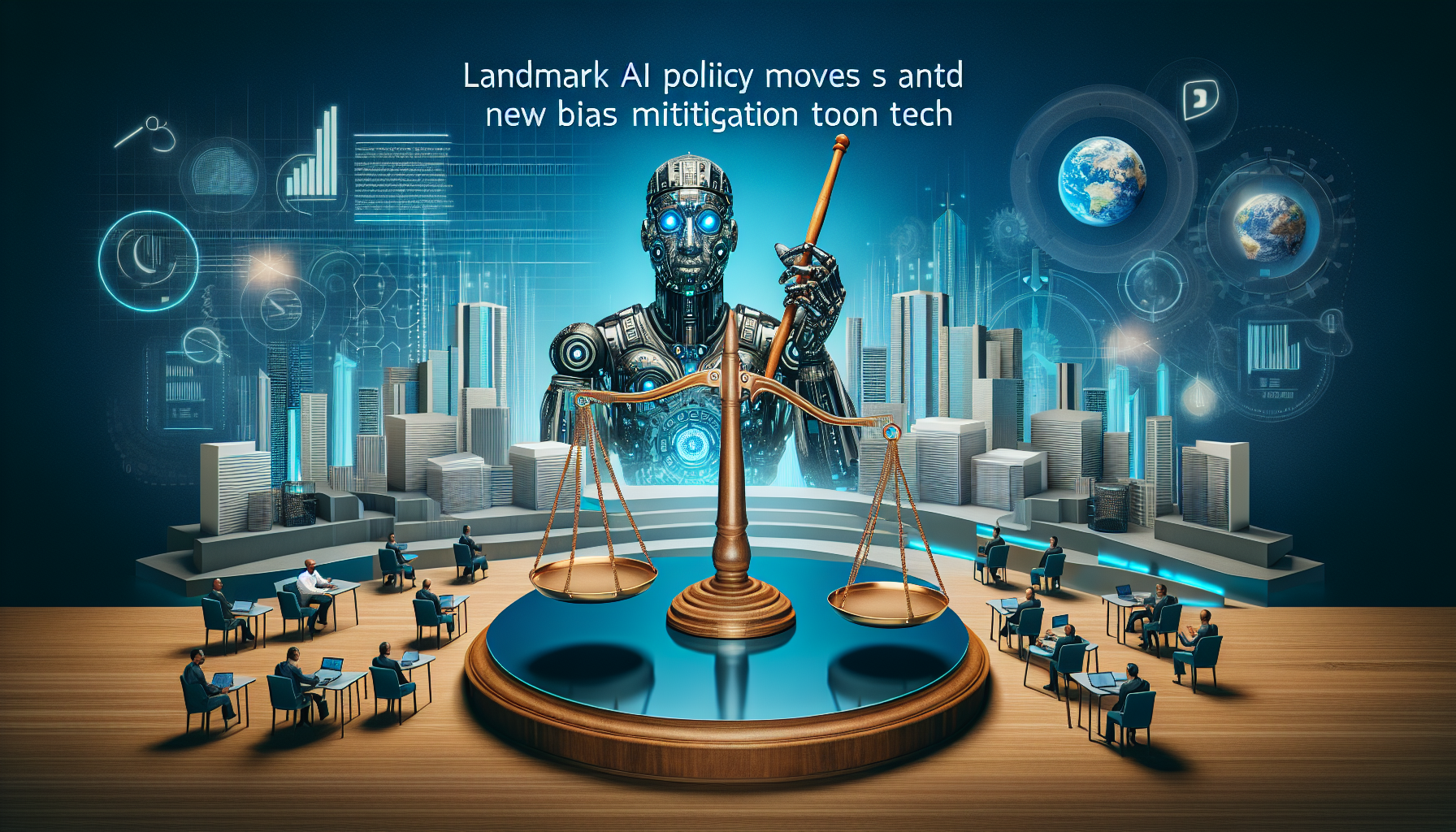Landmark AI Policy Moves and New Bias Mitigation Tools Shake Up July 2025
Introduction
July 2025 marked a significant turning point in the development and regulation of artificial intelligence (AI) in the United States. The Trump Administration's release of the America's AI Action Plan and associated executive orders, alongside the introduction of new bias mitigation tools, have far-reaching implications for industry, government, and the broader AI ecosystem.
Key U.S. AI Policy Moves in July 2025
The America's AI Action Plan, released on July 23, 2025, is the most sweeping federal AI policy initiative to date. The plan establishes a roadmap to:
- Deregulate existing AI rules and incentivize states to do the same, making federal funding contingent on deregulation.
- Accelerate innovation and investment in AI infrastructure, education, and training, with a focus on building an AI-skilled workforce.
- Promote the export of AI technologies to allied nations while imposing stricter controls on exports to competitor countries—reshaping global compliance and operations for tech companies.
- Bolster American AI dominance through deregulation, “ideologically neutral” AI systems, and aggressive international competition.
The Plan is structured around three pillars:
Accelerating Innovation
Building American AI Infrastructure
Leading in International Diplomacy and Security
Three executive orders accompanied the Plan:
- Promoting the development and export of the “American AI Technology Stack.”
- Streamlining federal permitting for new data centers.
- Mandating federal adoption of “Unbiased AI Principles,” emphasizing truth-seeking and ideological neutrality in government AI procurement and use.
Additionally, the Plan directs updates to the NIST AI Risk Management Framework (AI RMF), specifically removing references to Diversity, Equity, and Inclusion (DEI) and related concepts, prioritizing “ideological neutrality” in risk assessment and mitigation frameworks.
The establishment of new governance structures, such as the AI Information Sharing and Analysis Center (AI-ISAC) at the Department of Homeland Security (DHS), will coordinate cybersecurity, threat intelligence, and incident response for AI systems.
New Bias Mitigation Tools and Trends
The mandate for “Unbiased AI Principles” in federal procurement and the updated NIST guidelines direct federal agencies and contractors to prioritize “truth-seeking” and “ideological neutrality.” While specifics on new technical bias mitigation tools were not detailed in the sources, these policy shifts are already leading to:
- The development and deployment of new tools intended to measure and minimize ideological or political bias in AI models, particularly those used in government or regulated sectors.
- A move away from DEI-focused mitigation strategies toward frameworks emphasizing neutrality and objectivity, with compliance requirements for federal contractors and implications for the wider industry.
Agencies such as NIST and CISA are tasked with issuing updated technical guidance on bias detection, mitigation, and risk management under the new policy priorities.
Implications
The landmark AI policy moves and new bias mitigation tools have significant implications for various stakeholders:
For Businesses
Companies must rapidly adapt to shifting compliance requirements, new procurement rules, and changing international trade dynamics, especially if operating in multiple jurisdictions.
For Developers
Bias mitigation practices are being realigned to focus less on demographic equity and more on ideological neutrality and truth-seeking as defined by updated federal guidelines.
For Policymakers and Watchdogs
The deregulatory focus and shift away from DEI have sparked debate over potential impacts on fairness, innovation, and global competitiveness, with states and international partners responding to new U.S. approaches.
Conclusion
In summary, July 2025 marked a profound shift in U.S. AI policy and bias mitigation strategy, with deregulation, infrastructure investment, and a new emphasis on “ideological neutrality” reshaping both government and industry approaches to artificial intelligence. As the AI landscape continues to evolve, it is essential to stay informed about the latest developments and their implications for businesses, developers, and policymakers alike.
Read Next
- Amazon vs. Walmart: AI Retail Dominance Battle Heats Up
- "HeyGen Unveils Video Agent: The First AI Operating System for Full Video Creation"
- FutureHouse Unveils AI Platform to Supercharge Scientific Discovery
- Amazon and Walmart Battle for AI-Driven Retail Dominance
- Advanced Large Language Models (LLMs): New versions like GPT-4.5, Claude 4.0 and Mistral Large 2 are pushing boundaries

